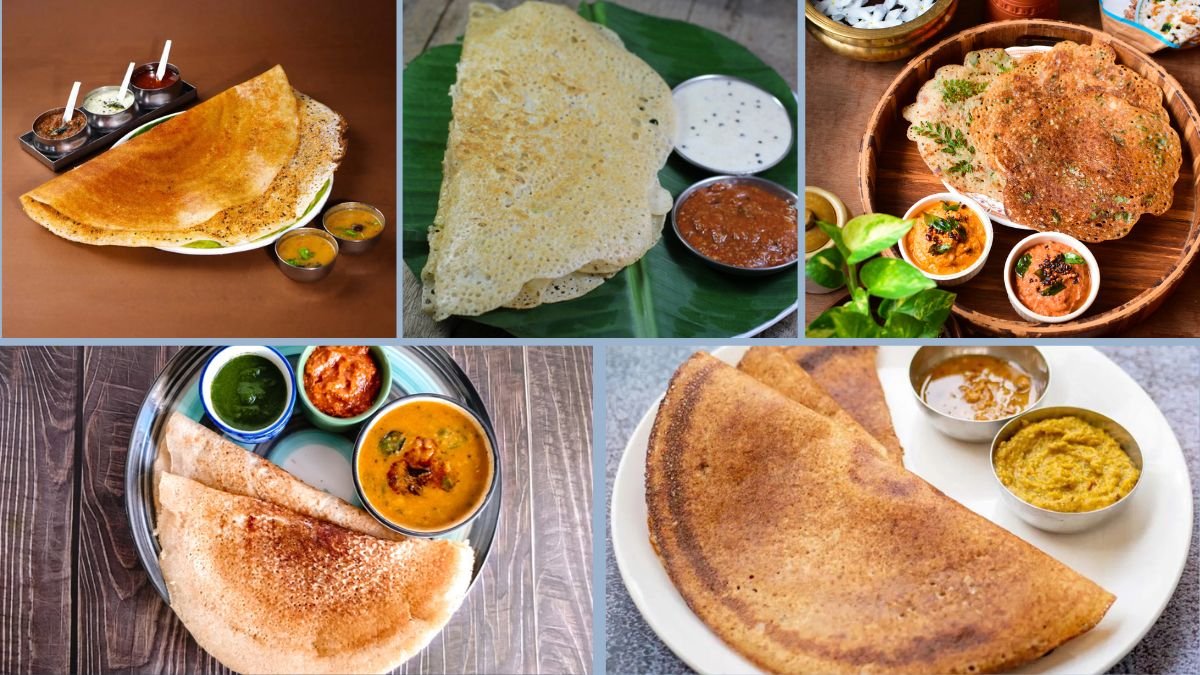Breakfast is often termed the “most important meal of the day,” and among its ideal criteria are nutritional balance, digestibility, and practicality. Traditional Indian dosas (fermented rice–lentil crepes) are nutritious, but incorporating oats makes them even healthier. Veg oats dosa combines oats with vegetables, making it fiber‑rich, protein‑fortified, and more filling.
This 5‑step guide outlines how to prepare vegetable oats dosa—a wholesome, delicious, and easy breakfast option. It is ideal for inclusion in a thesis or academic study on functional foods, recipe improvement, or dietetic meal planning.
Why Use Oats in Dosa?
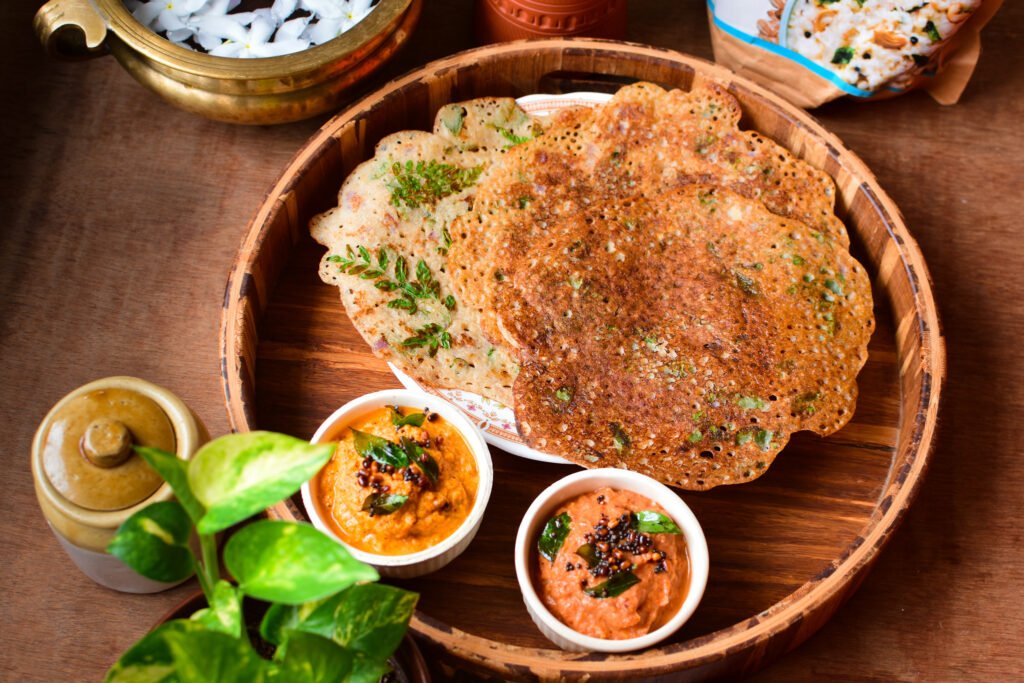
- High in soluble fiber (β‑glucan), which can help control cholesterol and blood glucose.
- Good source of complex carbohydrates, giving sustained energy.
- Gluten‑free (if pure oats used), and generally well‑tolerated.
- Neutral taste, so it works well with spices and vegetables.
- Helps reduce reliance on rice, making the dish lighter and lower GI.
In combining oats with vegetables, you improve micronutrient content, antioxidants, and dietary fiber. The result is a dosa that is more nutritious yet still crisp and flavorful.
Step 1: Gather & Prepare Ingredients
A well‑assembled ingredient list and preparation pave the way for smooth cooking.
Ingredients (for 4–5 dosas)
| Component | Ingredient | Quantity / Notes |
|---|---|---|
| Oats (rolled / quick) | 1 cup | Use gluten-free if needed |
| Rava (semolina) or rice flour | 2 tbsp (optional) | Adds crispness |
| Besan (gram flour) | 2 tbsp (optional binder) | Helps binding |
| Yogurt (optional) | 2 tbsp (sour, whisked) | Adds slight fermentation, but optional |
| Water | As required | To make dosa batter consistency |
| Vegetables | Finely chopped onions, capsicum, carrot, beans | ~¼–½ cup total |
| Aromatics & spices | Ginger (finely grated) 1 tsp, green chili (chopped) 1 tsp, coriander (chopped) 1–2 tbsp | For flavor |
| Salt & seasonings | Salt to taste, optional red chili powder, black pepper | For seasoning |
| Oil or cooking spray | Very minimal (for the griddle) | Use a nonstick or well‑seasoned griddle |
Pre‑Preparation Tasks
- Wash and chop vegetables finely (uniform size helps with even cooking).
- Grate ginger, chop green chili, coriander leaves.
- Whisk the yogurt (if using) to a smooth consistency.
- Measure oats, flours, and seasonings so everything is ready.
With ingredients ready in bowls, the cooking flow becomes seamless.
Step 2: Mix & Rest the Batter
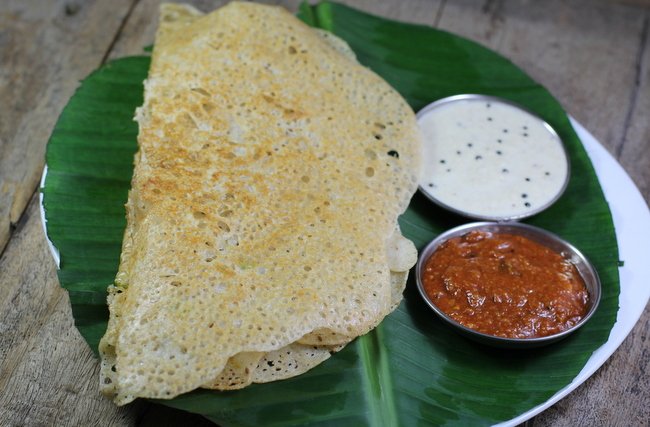
Proper mixing and resting improve consistency and flavor.
- In a mixing bowl, combine oats (powdered or whole—see note below) with optional rava, besan, and salt.
- Gradually add water, stirring continuously to avoid lumps, until the batter has a pourable pancake‑batter consistency (neither too thick nor too watery).
- If using yogurt, add it now and mix. It helps slight fermentation and soft texture.
- Stir in vegetables + aromatics + spices (onion, capsicum, carrot, ginger, green chili, coriander).
- Cover and let the batter rest 10 to 15 minutes. Resting allows oats and flours to absorb moisture, leading to better batter thinning and crisping.
Note on oats form:
- You can use rolled oats by grinding half to a coarse powder and mixing with some whole oats.
- Or use quick oats which dissolve more easily.
- Too many whole oats may make dosa brittle; balance is key.
Step 3: Adjust Batter & Preheat the Griddle
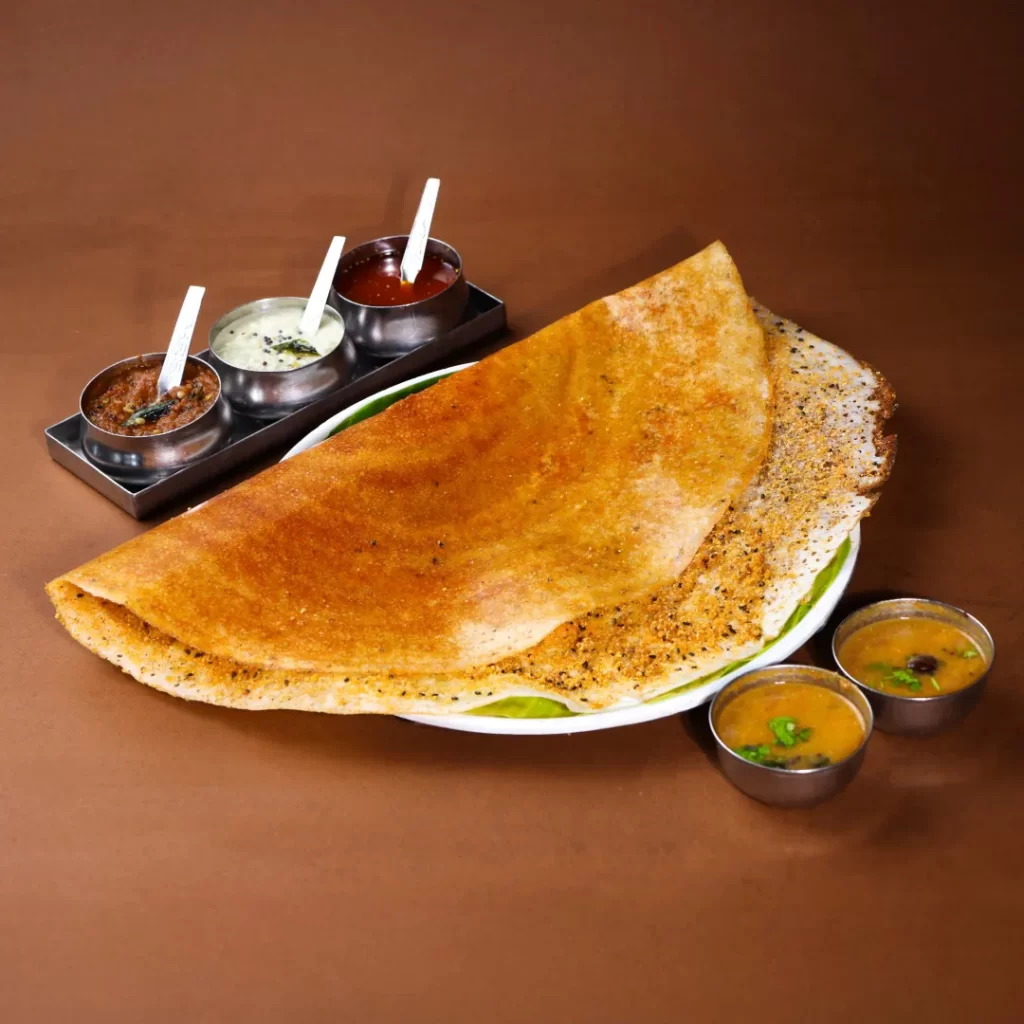
After resting, check consistency and get the cooking surface ready.
- Check the batter: If it has thickened too much, add a little water and remix. You want a consistency that pours but holds together.
- Let the griddle / tawa heat up on medium heat. Use nonstick or cast iron seasoned surface.
- Optionally, sprinkle a drop of water—if it sizzles and evaporates quickly, the griddle is ready.
- If needed, lightly grease the griddle (just a smear or spray) to prevent sticking. The goal is minimal oil use.
Temperature control is critical: too cold, dosa sticks; too hot, it burns before cooking through.
Step 4: Spread & Cook the Dosai
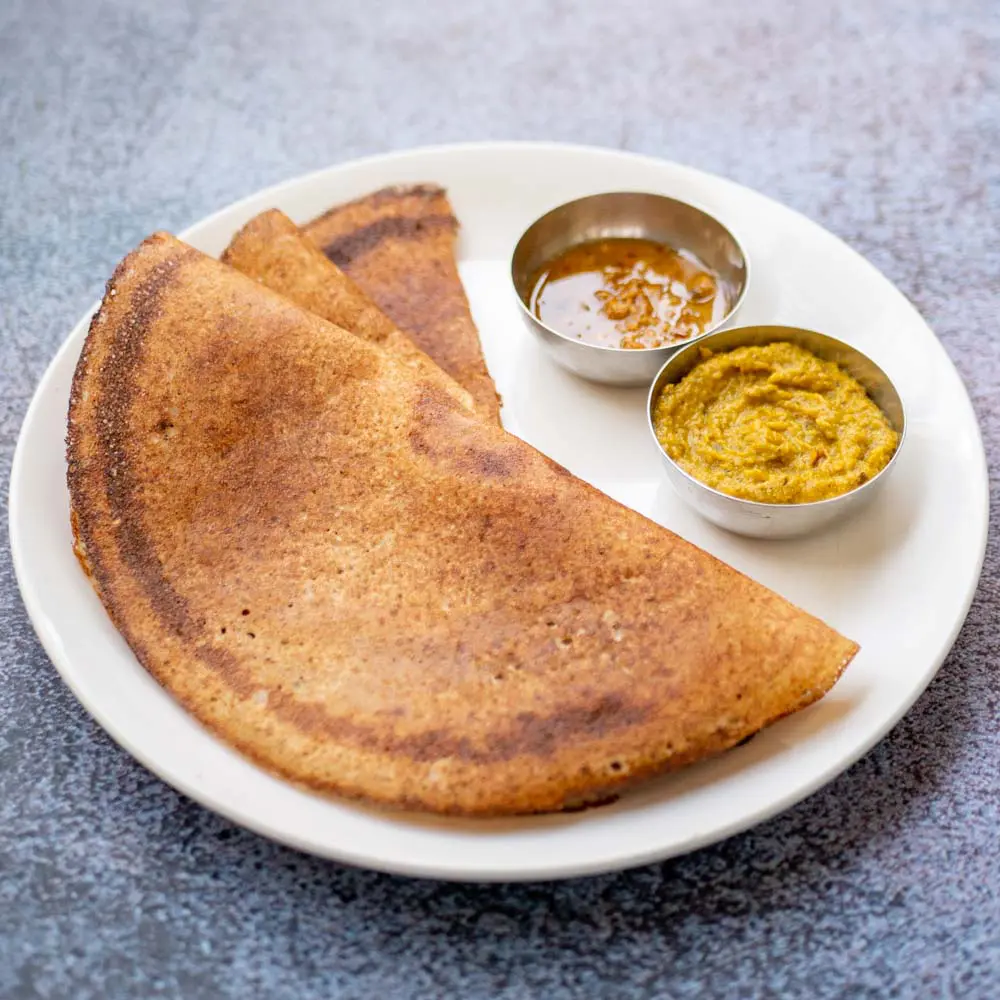
This is the stage where technique and care influence the end texture.
- Stir the batter just before pouring (vegetables may settle).
- Pour a ladleful of batter onto the griddle at center.
- Starting from the center, spread outward in circular motion (or use back of ladle) to form a thin dosa (6–8 inch diameter).
- Drizzle a few drops of water around the edges if needed—this helps lift edges and promotes crisping.
- Cook on medium heat, allowing the dosa to cook until you see edges lifting and small bubbles forming on surface (about 2–3 minutes).
- Flip and cook the other side for ~1 minute. Optionally, press lightly with spatula to help cooking inside.
- Repeat for remaining batter until all dosas are made.
Tips:
- For extra crispness, after flipping, press the dosa gently to ensure contact with griddle.
- If the edges stick, run a thin spatula underneath carefully.
- Aim to cook fast but evenly.
Step 5: Serve, Pair, Store & Nutritional Highlights
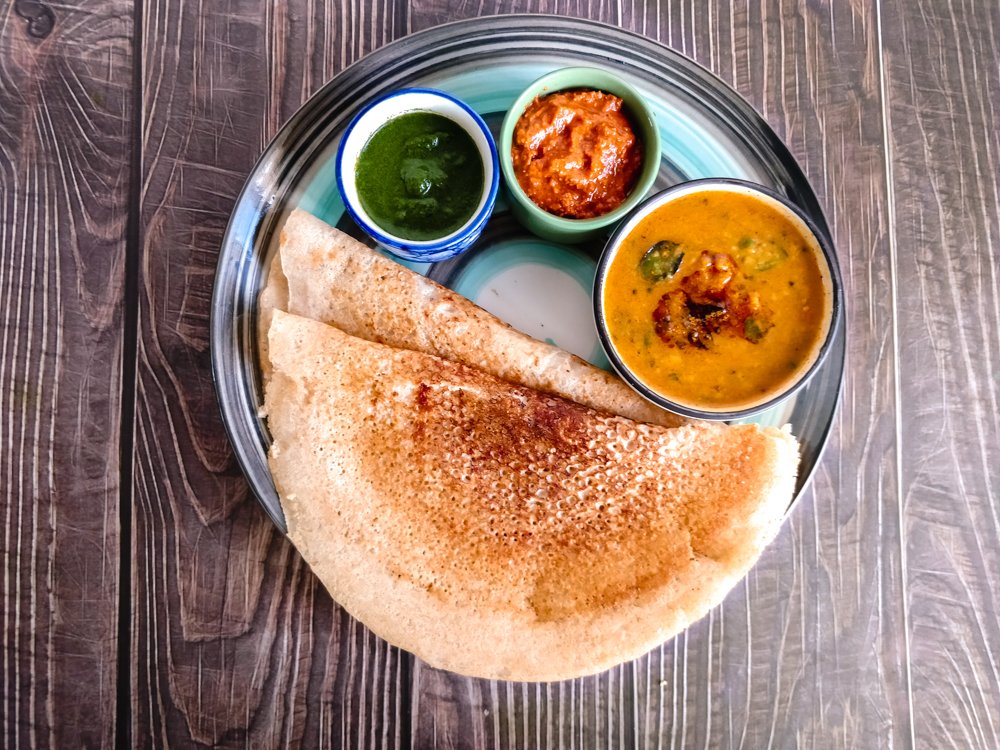
Serving & Pairing
- Serve hot, immediately, as they crisp best when fresh.
- Offer side of coconut chutney, tomato chutney, coriander-mint chutney, or sambar.
- You can also roll the dosa with stuffing such as spiced potato, paneer, or vegetables for variation.
- For a combo, serve with curd (yogurt) or fruit salad for a balanced plate.
Storage & Reheating
- Because oats dosa is best fresh, storing makes it softer.
- If leftover, keep in an airtight container. Reheat on a hot griddle (no oil) for crispness.
- Do not stack too many together while warm as moisture will make them soggy.
Nutritional Highlights (Approximate per dosa + accompaniments)
| Nutrient | Estimate |
|---|---|
| Calories | ~100–130 kcal |
| Carbohydrates | 15–20 g |
| Protein | 3–4 g |
| Fiber | 3–4 g |
| Fat | Minimal (trace) |
| Micronutrients | Vitamin A, C, iron, potassium (from vegetables, oats) |
This dosa is low in fat, high in fiber, and moderate in protein, making it well suited for a healthy breakfast that sustains you until mid-morning.
Additional Tips, Common Issues & Variations
Tips for Better Dosai
- Use fine ground oats + some coarse oats for texture contrast.
- Adjust batter consistency based on ambient humidity and oats type.
- Cook on medium heat—too high leads to burning, too low to sticking.
- Use a good nonstick or well-seasoned griddle.
- Work quickly once spreading—don’t let batter sit too long on griddle before spreading.
Common Problems & Fixes
| Problem | Cause | Solution |
|---|---|---|
| Dosa sticks to pan | Griddle not hot or insufficient greasing | Preheat more, lightly grease or season |
| Dosa tears while flipping | Batter too thin / undercooked | Thicken batter or cook a bit longer |
| Dosa is very soft, not crisp | Batter too thick / too much moisture | Adjust water, rest batter more |
| Batter separation | Vegetables settling / inadequate stirring | Stir batter before pouring |
Variations & Enhancements
- Add millets like ragi or bajra for variety and nutrition.
- Add flaxseed powder or chia seeds for omega‑3 boost.
- Include spinach purée or kale in batter for green dosa.
- Stuffed oats dosa: after spreading, place spiced potato or paneer filling, then fold and cook.
- Gluten-free: use certified gluten-free oats and skip rava if needed.
Conclusion & Academic Implications
The 5‑Step Guide to Veg Oats Dosa demonstrates how a traditional breakfast can be adapted into a nutritious, fiber-rich, low-fat alternative that still captures the essence of dosa. The process emphasizes:
- Creating a balanced batter,
- Using vegetables and oats to boost nutrition,
- Managing cooking technique and heat,
- Maintaining sensory qualities such as crispness and flavor.
In a thesis or research context, this recipe can lead into further study:
- Sensory evaluation: comparing traditional dosa and oats dosa for texture, taste, appearance.
- Nutritional analysis: macro- and micronutrient comparisons.
- Consumer acceptability studies in target demographics.
- Adaptations for special diets (diabetic, gluten-free, low-sodium) and evaluating their outcomes.
If you like, I can convert this into a formatted thesis chapter (with tables, images, experiment plan) or generate a shorter abstract version. Would you like me to do that?
